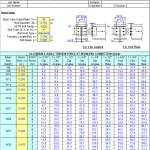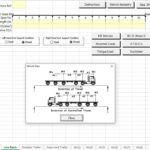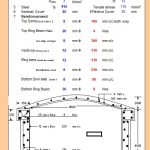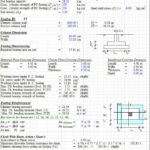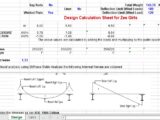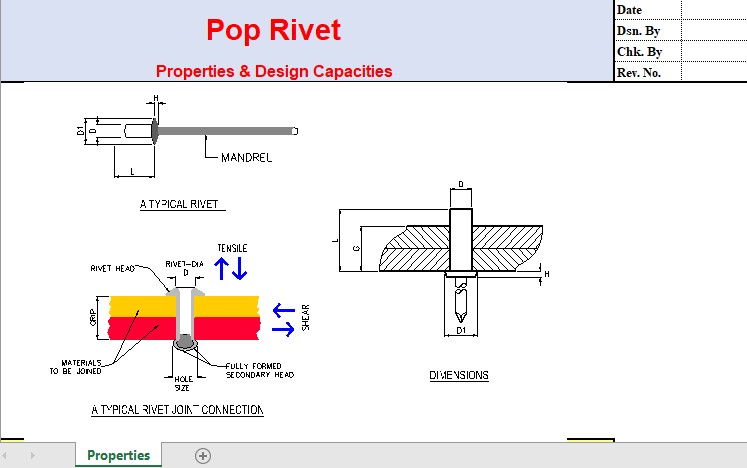
Pop Rivet Properties and Design Capacities Spreadsheet
11 July 2022Table of Contents
Pop Rivet Properties and Design Capacities Spreadsheet
When it comes to construction, most people picture towering cranes, heavy machinery, and stacks of steel beams. But among these giants, there are smaller, often overlooked components that play an equally crucial role: pop rivets. These unassuming fasteners have revolutionized construction projects, offering unmatched durability and efficiency. In this article, we’ll dive into the world of pop rivets, exploring their uses, benefits, and why they’re indispensable in modern construction.
What Are Pop Rivets?
Pop rivets, also known as blind rivets, are tubular fasteners with a mandrel through the center. They are designed to join two or more materials together—metal, plastic, or even wood—quickly and securely. Unlike traditional rivets that require access to both sides of the material, pop rivets can be installed from just one side, making them perfect for “blind” installations.
How Do They Work?
Pop rivets are installed using a riveting tool. Here’s a simple breakdown:
- Insert the rivet into a pre-drilled hole in the materials being joined.
- Use a riveting tool to pull the mandrel, expanding the rivet body and forming a secure bond.
- The mandrel snaps off, leaving a clean, finished look.
Applications of Pop Rivets in Construction
1. Structural Connections
Pop rivets are commonly used in lightweight structural applications. From connecting metal sheets in roofing to assembling prefabricated steel frameworks, their strength and reliability make them a go-to choice for builders.
2. Cladding and Facades
In modern architecture, cladding and facades are essential for aesthetics and insulation. Pop rivets ensure these materials are securely attached, even under challenging weather conditions.
3. HVAC Systems
Heating, ventilation, and air conditioning (HVAC) systems rely heavily on pop rivets for ductwork assembly. Their ease of use and strong grip make them ideal for creating airtight connections.
4. Bridges and Tunnels
In civil engineering projects like bridges and tunnels, pop rivets are used to secure panels and components, providing durability and long-lasting performance.
Why Pop Rivets Are a Game-Changer
1. Ease of Installation
The ability to install pop rivets from one side speeds up assembly times, reducing labor costs and increasing efficiency on construction sites.
2. Versatility
Pop rivets come in various sizes, materials, and finishes, making them suitable for a wide range of applications. Whether you’re working with aluminum, stainless steel, or plastic, there’s a pop rivet for the job.
3. Cost-Effectiveness
Compared to welding or bolting, pop riveting is a more economical solution. The tools are affordable, and the installation process is straightforward, saving time and money.
4. Durability
Pop rivets create strong, vibration-resistant joints. This makes them perfect for environments where the structure is subjected to constant movement or stress.
Choosing the Right Pop Rivet for Your Project
Selecting the right pop rivet depends on several factors:
- Material Compatibility: Ensure the rivet material is compatible with the materials being joined to prevent corrosion.
- Load Requirements: Choose a rivet that can handle the load and stress of the application.
- Environmental Conditions: For outdoor projects, opt for corrosion-resistant materials like stainless steel or aluminum.
Conclusion
Pop rivets may be small, but their impact on the construction industry is monumental. From streamlining assembly processes to ensuring durable, long-lasting connections, they’re an essential component of modern building techniques. By understanding their applications and advantages, construction professionals can leverage this humble fastener to deliver projects that stand the test of time.
If you’re planning a construction project, don’t overlook the power of pop rivets. These hidden heroes could be the key to your project’s success!

